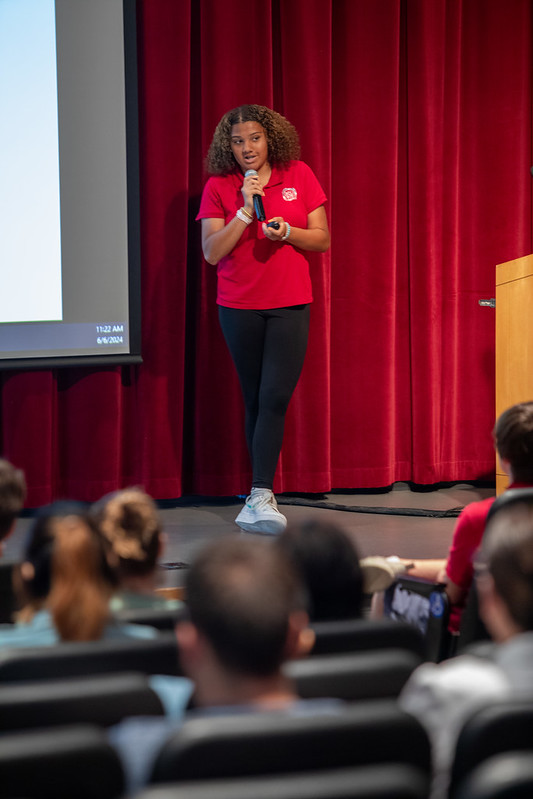- Apply
- Visit
- Request Info
- Give



Published on June 13, 2024
The Institute for Sustainability at Eastern Connecticut State University partnered with the Charles H. Barrows STEM Academy to spotlight a new generation of sustainability advocates on June 6. For the second consecutive year, dozens of eighth grade students filled the Student Center's Betty R. Tipton Room with research related to sustainability and human rights issues.
Nick Kukla ‘19, a science teacher at Barrows, explained that the presentations are a requirement for graduating students; the capstones require them to integrate the thinking skills they’ve acquired during their tenure at Barrows into a solution-oriented project.
“What being solution-oriented means is not only being an expert in the problem that they’re focusing on, but also having the agency and the ability to look into those solutions and actually implement them,” said Kukla. “You’ll see in most of the projects that there is some tangible outcome that came to their research.
“Some students did clothing drives; others conducted water tests, while some did something as simple as making posters and trying to increase awareness,” said Kukla. “You really see them bring these solutions to light through all their hard work.”
Research topics included critically endangered animals, gender equality, family stability, public safety and environmental decay.
In her speech to the students, Patricia Szczys, executive director of the Institute for Sustainability, explained that Eastern’s goal in its partnership with Barrows is to elevate Eastern students’ research.
“It’s very important that you’re wrestling with the issues of sustainability and human rights,” she said. “Those aren’t easy challenges, so I know that all the staff, the families and faculty that are here today are eager to learn from you because now you’re the experts after studying your topics for so long.”
Eastern’s interim-president, William Salka, added that the cognitive skills and community connections the students acquired through their capstones will continue to flourish as they progress through their academic careers.
“Conducting research will be invaluable, and you will continue to do it in high school and in college because it teaches you critical thinking skills as you think about the questions you’re asking and how you’re going to answer them,” said Salka.
“You will take the information that you gathered and you will share it with the world—that’s what science is all about, discovering new things and sharing (them) for the betterment of society.”
Kukla concurred that Barrows’ goal for its graduating class is to implement a new status quo of thinkers who can collaborate to find solutions to improve society.
“We don’t want to just create solutions for problems; we want to create advocates for the future,” said Kukla. “We think that these topics have so much weight to them and the students have done so much hard work that by partnering with Eastern, not only is it an excellent opportunity for the university to increase awareness, but it's an opportunity for us to better showcase their work to the community as a whole.”
Written by Elisabeth Craig